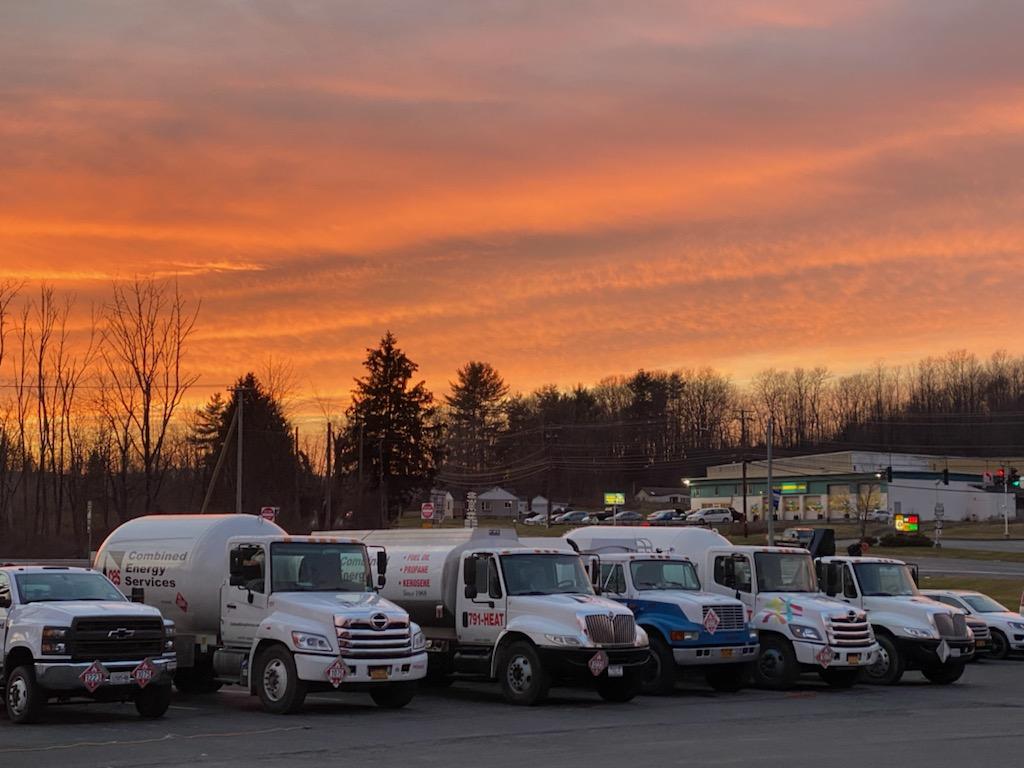
11/23/2022 by Combined Energy Services 0 Comments
Automatic Delivery FAQs
Let's dispel some auto delivery myths. We'll start with what autmoatic delivery entails. When you sign up for autmatic delivery, Combined Energy Services monitors your fuel consumption. We use a three-point system to determine when you need fuel. Contrary to what you may have been told, his isn’t something arbitrary.
There are quite a few rumors that revolve around automatic delivery. For example, we don’t just stop by when we’re in the neighborhood or wait until fuel prices are the highest, hoping that you’ll be empty. A lot of planning goes into automatically scheduling your delivery.
Step #1 – Heating Fuel Usage History
Your individual fuel consumption plays prominently in our automatic delivery calculation. If we don’t have a household history, we may look at a previous resident’s consumption if that information is available.
We also consider how the fuel is being used. Is it for heat or do you also use it for water heating? Maybe you have a propane stove or a space heater too. What temperature do you like to keep the home? A toasty 74°F may cost more than a chilly 62°F. How well your home is insulated, dictates your home’s heat loss, and this is HUGE in the amount of heating fuel you are going to burn.
Step #2 – Heating Degree Days
CES monitors heating degree days. What are heating degree days? They are the difference between the daily temperature mean – the high temperature plus the low temperature divided by two – and 65°F. If the temperature mean is below 65°F, you subtract the mean from 65 and the result is heating degree days.
For example:
Calculate the mean
Daily high temperature is 42 and the low is 28.
42 + 28 = 70
70/2 = 35 is the mean daily temperature
Calculate the heating degree days
65 – 35 = 30 heating degree days
Heating degree days are calculated for each day of the month and then added together for the monthly total. Adding these days up is a good predictor of what your heating bills will be. The higher the degree days, the higher the bill and vice versa.
According to the U.S. Energy Information Administration (EIA), the average number of heating degree days for our tri-state region is 5,910. These days are typically distributed in a bell curve shape over the months of September through April, with January and February typically being the coldest months. It’s during these months that you will also see your highest heating bills.
Step #3 – K-Factor
K-what? Yes, K-Factor! K-Factors are calculated by taking the amount of degree days between deliveries divided by the amount of fuel delivered. This is your “miles per gallon” for your home. The higher the K-Factor, the longer you can go between deliveries. The lower the K-Factor, the more often you need deliveries.
Here’s an example:
If 1,000-degree days are between deliveries and you use 200 gallons of fuel, your K-Factor would be 1,000/200 = 5. Using the example degree days from above of 30-degree days, you would divide 30 by 5 and the resulting 6 gallons is what you would use for a day with 30-degree days.
Ideally, we would have several deliveries to determine an accurate K-Factory portrayal. It’s why initially, we do manual checks and adjust as necessary. This is also why when there are changes in your consumption (i.e. A lot of company or unseasonably cold/warm) that your K-Factor might need to be adjusted.
So, after reading all that goes into determining an automatic delivery plan for your home or business, what is holding you back from enrolling in automatic delivery? Based upon everything above, you will need heating fuel anyway. Take one more thing off your worry list and let us plan your deliveries. Not only will you avoid fees associated with a run-out, but you will also become a priority delivery during bad weather.
Sign up today! Call us at 800-874-1975. Have your current fuel gauge reading available for our customer service representatives. They will determine when you need a delivery and place your account on automatic delivery moving forward.
*Please note: Automatic delivery is not fail-safe and is NOT a guarantee that you will never run out of fuel. Many factors come into your home’s energy consumption. If you suspect that your consumption is higher than normal, check your gauge. If necessary, call the office and arrange for a delivery.
If you have questions about your service or products we offer, please email info@combinedenergyservices.com Do not leave a service or product question in the comments.

Comments